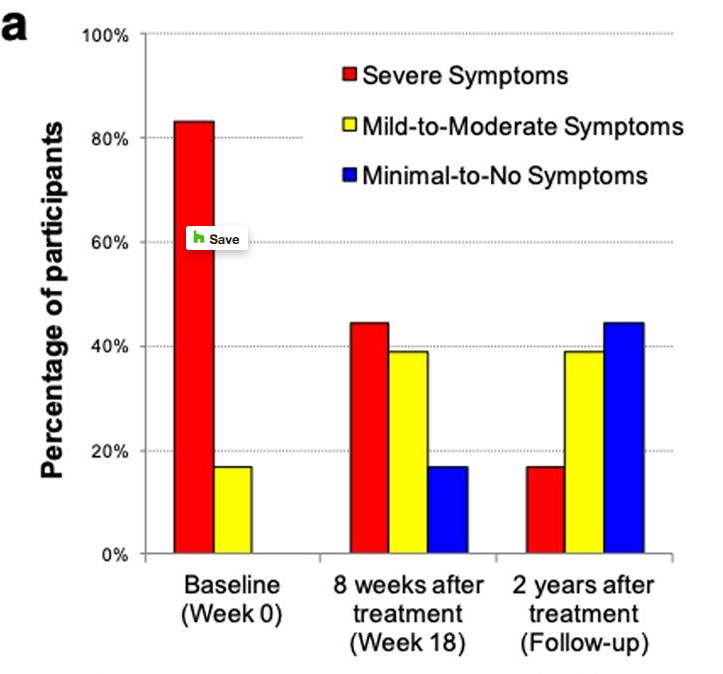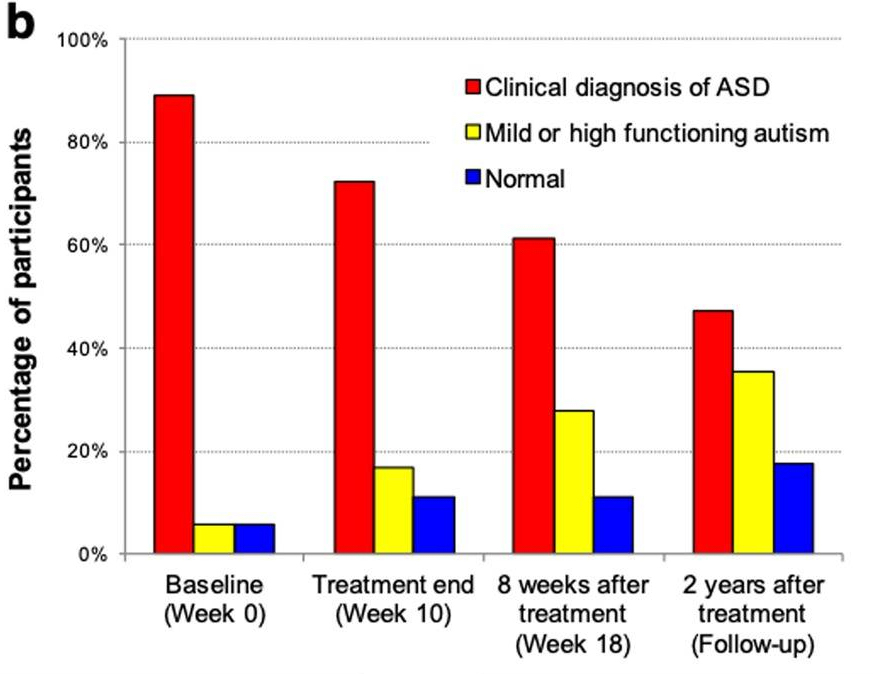Warning – This is experimental research
Microbiota Transfer Therapy is not FDA approved as a treatment for autism. Microbiota Transfer Therapy is just starting to gain traction in treating diseases, although there have been deaths from MTT. So please consult your health care practitioner. This is not something to try on your own.
What Is Fecal Microbiota Transplant?
Fecal Microbiota Transplants are commonly done to treat Clostridium difficile infections. FMT typically contains about 1,000 bacterial species native to the gut and has shown promise as a treatment for numerous diseases. C. Diff (Clostridium difficile) being one of them.
In 2019, the Food and Drug Administration (FDA) issued a safety alert after one patient died and another suffered from an invasive infection after receiving FMTs. So you might be starting to wonder FMTs, how can that happen? What is it? How is an FMT prepared? (And, yes FMT is poop.)
How Is An FMT Prepared?
Instead of pure stool, most times you have standard human gut microbiota, that’s what used. It starts from stool from a healthy donor.
- Donors are typically screened thoroughly by looking at medical history, and many types of laboratory testing.
You would not want to take stool from a person who appears to be healthy, but yet, has underlying bacterial infections or viruses, and take that, and put that into a person who is struggling with an illness. This is how someone could die from receiving a stool transplant. It’s really important that the donor is thoroughly screened.
- Once the donor is screened, then you have the stool.
- Then it’s filtered and prepared either typically as a liquid or frozen, and put into capsules for the person to swallow.
What Clinical Trials Have Been Done In Autism?
Let’s look at autism and what kind of clinical trials have been involved in this area of research.
- A study in 2000, showed that treatment with vancomycin resulted in short-term benefit in 8 out of 10 children with autism studied.
- The results of an open-label study (the participants knew what they were getting and there was no placebo) were published in 2017 to evaluate the safety, tolerability, and efficacy of a long-term FMT.
- Research has shown that only C. diff responds well to one dose and this autism open-label research explored a prolonged, daily treatment.
- 18 children with autism were studied.
Scientists have really been trying to understand how can we change the Microbiota more permanently. We can do that with diet right now, we can do that with probiotics, it can be done in a variety of different ways, but it was, what else can be done.
What Was The Procedure?
Let me get straight to the procedure. Here’s a graphic from the research publication.

You can see how Vancomycin was given as a treatment from day 1 to day 14, then with overlapping Prilosec, so they’re going to suppress the stomach acid to make the environment more conducive to letting things into the small intestine, in the large intestine. So this Prilosec is decreasing the natural defenses of the body. It was done purposely.
Then, a MoviPrep was done. That is very much like a Colonoscopy prep. So you’re going to basically empty out the gut as much as possible.
Then, the FMT was started. They call it here MMT for the Microbiota Transfer Therapy, just because of the prolongedness of the treatment. So the children were receiving daily stool treatments from week 3 until week 10. So they had 8 weeks of daily ingesting of prepared stool, it’s called the Microbiota Transfer Therapy. This is very different than what’s been done before.
Adverse Effects
The adverse effects were generally well tolerated. During the Vancomycin treatments, part of the procedure, there was hyperactivity and some tantrums and aggression that increased.
Results: GI Symptoms
The results are what is very interesting. They looked at GI gastrointestinal symptoms, and
- 2 out of the 18 children with autism were non-responders
- Gastrointestinal Symptom Grading Scale (GSGS) was used to assess GI symptoms
- The average GSGS score dropped 82% from the start of the treatment to the end of the treatment.
- The DSR showed a significant improvement in daily stooling when treatment was stopped and that remained 8 weeks post-treatment.
This is a very big change because previously, treatment with just Vancomycin did not result in changes once the treatment was stopped. Here the treatment was stopped, it was measured 8 weeks post-treatment being stopped, and there was still an improvement in the GSGS score.
The same is true for daily stooling. Daily stooling improved during the treatment, and it was measured again 8 weeks post-treatment, and daily stooling remain improved too.
Results: Autism Behavior
- Parent Global Impressions-II (PGI-II) and PGI-III were used and both revealed significant improvement when treatment was stopped and 8 weeks post-treatment.
- Childhood Autism Rating Scale (CARS) showed a 22% reduction in core autism symptoms.
- The Social Responsiveness Scale (SRS) is a 65-item scale that assesses social impairments – there were improvements overall.
- The Aberrant Behavior Checklist (ABC) assesses problem behaviors in five areas – irritability, lethargy, stereotypy, hyperactivity, and inappropriate speech – this score generally improved as well.
- The Vineland Adaptive Behavior Scale-II (VABS-II) is a measure of the functioning level in four different domains: communication, daily living skills, socialization, and motor skills.
- During treatment, the average developmental age increased by 1.4 years across all subdomains.
- However, the final VABS-II developmental age was still lower than their chronological age.
Results illuminate that as GI symptoms decrease, autism behaviors improve. Many parents know this already. That’s why many parents start with diet, they start with treating the gut, they look at all of the components of the gastrointestinal system. This is why as GI symptoms decrease, autism behaviors improve. This is something that is consistent with autism research. It’s great that it’s consistent here with this novel type of treatment.
When your child is feeling better, this is when you can go in and teach and have the child start to catch up. They’re not going to catch up in the developmental age magically. It’s a very different shift in looking at healing autism.
Significance
- Previously, vancomycin was used in an autism study for 8 weeks and the children saw an improvement in GI symptoms as well as autism behaviors however the changes were not retained post-treatment.
- With this study, vancomycin was paired with MTT and the changes were retained 8 weeks post stopping treatment.
Fecal transplant is not the only way to change the Microbiota. So even if you do not have access to FMT, you still can change the microbiota of your loved one with autism.
Long Term Follow-Up
So that research in 2017 that was published, they followed the children 8 weeks post-stopping the treatment. Another publication came out just this year in 2019, which was long term follow-up. So the researchers followed those 18 children from the initial MTT open-label study for a two-year post-treatment analysis. They wanted to see, alright, we stopped the treatment two years ago, how are things now.
They found that most GI improvements were maintained. They also found that autism-related symptoms were improved even more than when the MTT treatment was stopped. So there was continuous improvement in autism behaviors.
Here Are Some Important Details
- 12 out of the 18 children made some changes to their medication, diet or supplements although those changes were deemed minor.
- The Vineland Adaptive Behavior Scale (VABS) resulted in an increase of 2.5 development years over this 2 year period.
- This increase in the development age is much faster than typically seen in the autism population.
So please keep that in mind. The parents of these children were still doing things. They were still using medications for whatever was needed. They were still focusing on diet. Diet is extremely important in those with autism. Regardless of what treatment you’re going to use, diet is absolutely important. Supplements were continued to use. As the child changes, I’m sure those supplements were changed to meet the needs of the child at that moment.
In the autism population, if no changes are made for that child, their developmental age typically stalls out at a certain age. When parents do things like changing diet and supplements, medication, different educational approaches, developmental age can improve. What is interesting in this research is that the developmental age is increasing much faster than typically seen in the autism population.
Healing From Autism
Here, I wanted to show you what healing from autism looks like. It’s not instantaneous, it is not overnight, it is not necessarily easy, it’s not necessarily hard, but it’s not instant.
Here is a figure from the research.

This was in the initial open-label research (Figure A is the CARS measurement). On the left-hand side – the baseline, before they did the Vancomycin, before they gave the MTT, you can see that severe symptoms in the red, and mild to moderate symptoms. This is what the population looked like that open-label trial. 8 weeks after stopping that treatment, there are still children with severe symptoms. Things did not change overnight – it is not instantaneous, but there are changes. So you have some children here in the blue that has minimal to no symptoms.
Now, this is the measurement two years after treatment. Two years after treatment, parents are still working hard with their children. They did not let up on anything. Two years after treatment there’s a minimal amount of severe symptoms. More children are in these mild to moderate symptoms, and quite a number of them are in the minimal to no symptoms.
Here’s another figure from the research article (Figure B is the SRS assessment) from the two years follow up, that shows the same kind of trend.

Conclusion
Healing from autism is possible in so many different ways, but healing from autism is possible. Know that, believe that, feel that, see that from all the research that I just went through.
- It takes time, patience, and persistence to heal from autism and thereare many ways to heal.
- Use the Autism Healing Matrix to guide your healing and ensure everything that is needed for YOUR child gets done.
There are many ways to heal. Use the Autism Healing Matrix. This is what I developed after speaking to over 40 parents who have healed their children from autism. So many times parents, they see improvements, and they’re just searching, what am I missing? What am I missing? Look at the Autism Healing Matrix. This will ensure you’re not missing anything.

This is an exciting time to be in autism, there’s so much possible for your child. I see it every day with my clients, how things are just changing and improving and life just gets wonderful, life gets to be the way you imagined it would be with your child.
So please know, healing from autism is possible, but it takes time, patience, and persistence to heal.



